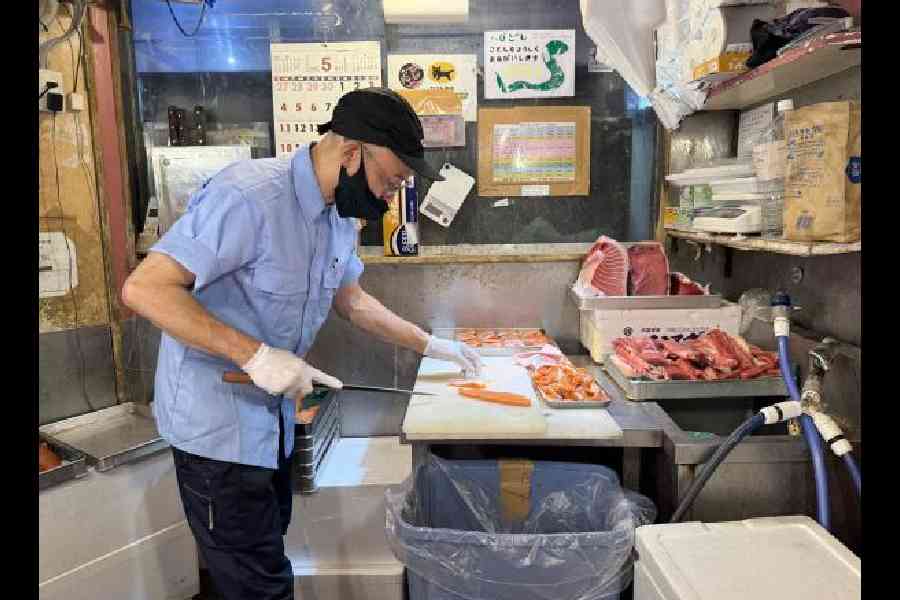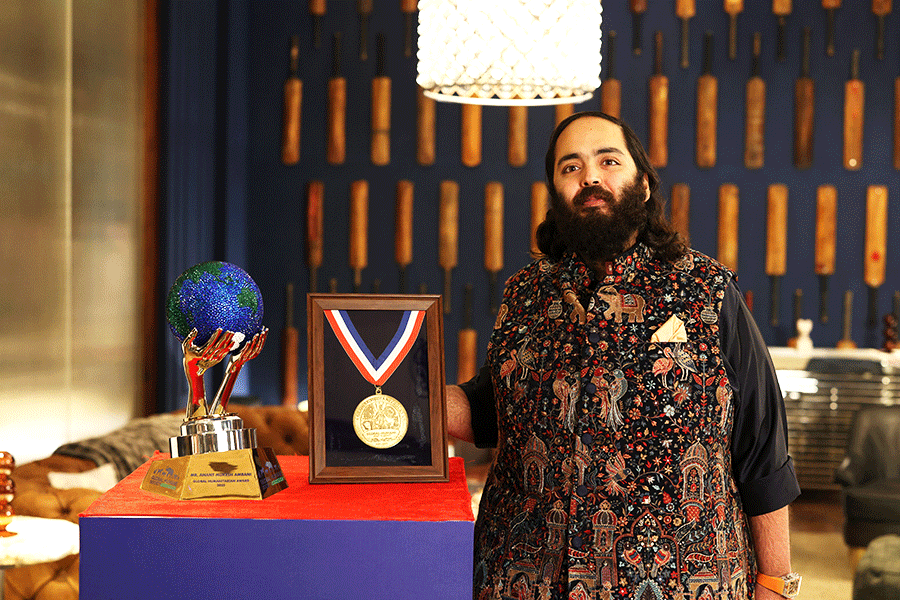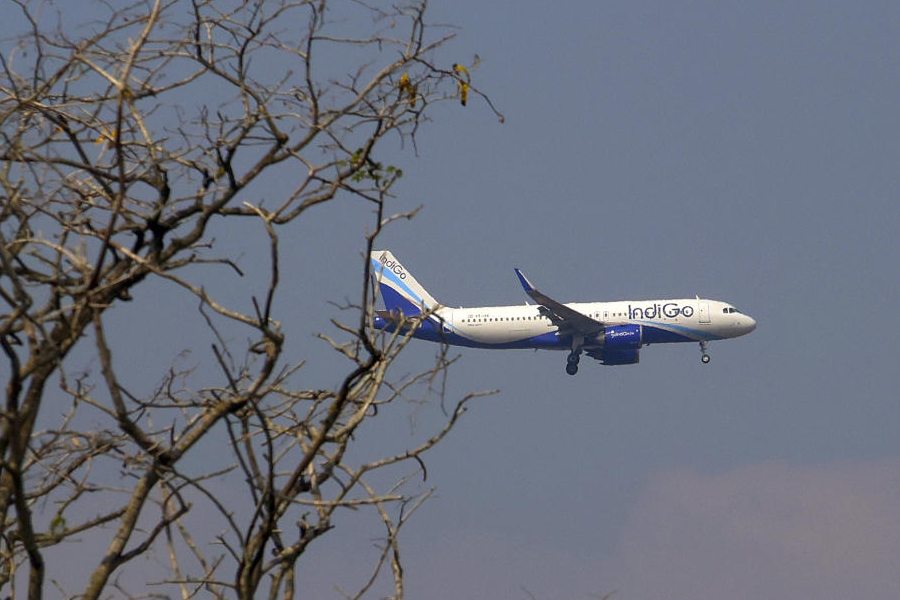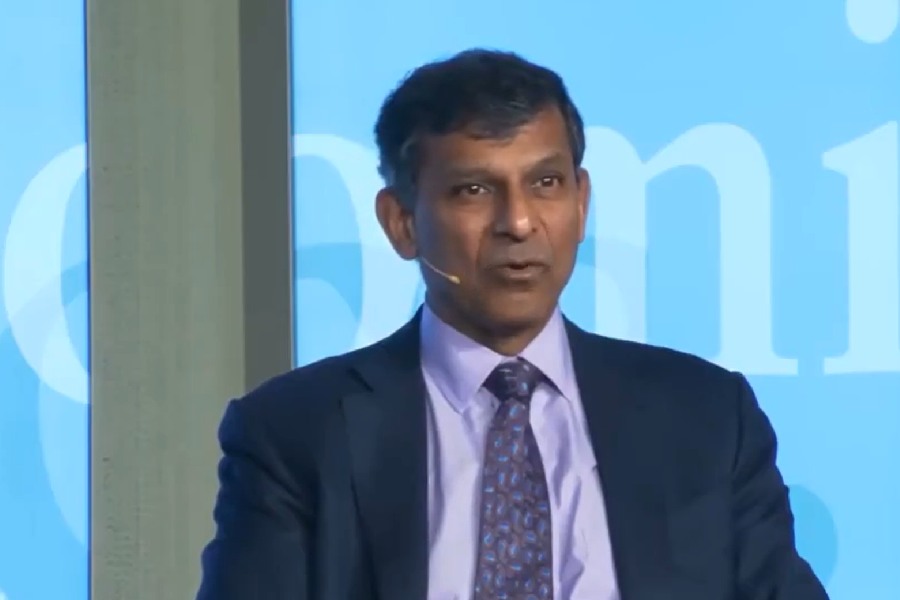Even a decade ago, Japan had not evolved as a mass tourist destination, but, over the past few years, it has claimed its place among popular destinations. Most visitors to Japan go there to soak in the country’s breathtaking natural beauty, while others go to discover its powerful historical narrative. Yet others go to soak in its culture, which is rich. Most marvel at the country’s amazing innovations in technology. A few, like me, seek out Japan’s eclectic gourmet scene.
I first set foot on Japanese soil as a 20-something professional many years ago while working for a Japanese trading company. It was my first job, and it took me regularly to the country every other month or so for a good three years. I soon realised that no matter how much you think you know about Japan, it will always take your breath away.
The legendary Japanese sense of discipline and etiquette was an assault on my rather laid-back sensibility. Quite bewildered, I took in the apologies that came not once but twice and thrice from my teammates across levels if they were delayed for even less than a minute. I noticed how deeply immersed they were while they worked and how they celebrated with abandon after office hours, often through the night, and then arrived on the dot at the office the following day.
Since then, Japan has remained my go-to destination, never failing to overwhelm me with new and exciting things to do on each visit. I am inexplicably addicted to this amazing country, and I will keep going back time and time again. That said, here’s a list of new discoveries made on my recent trip to the country last month.
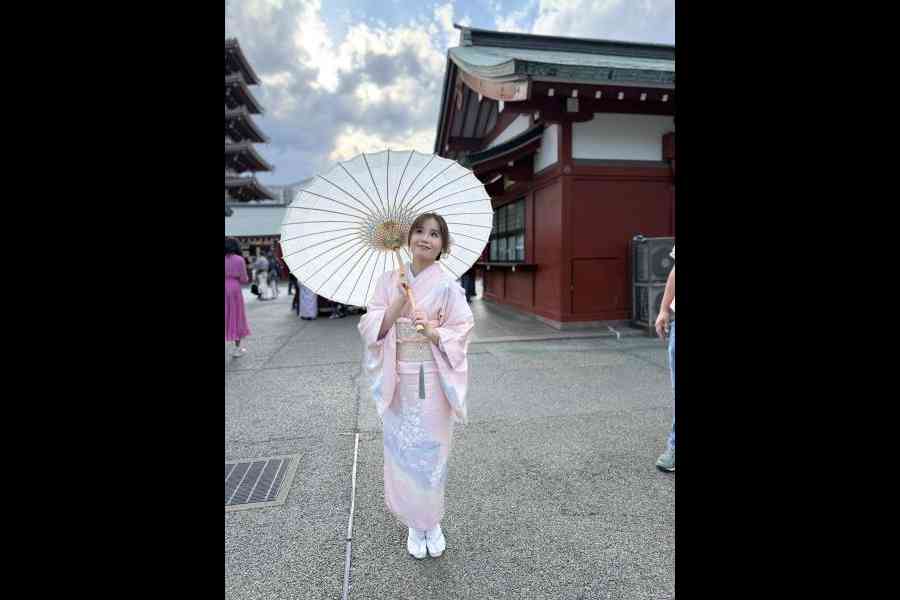
A pre-wedding shoot outside Osaka Castle. Picture: Shiladitya Chaudhary
The slogan of the Japanese National Tourism Organisation (JNTO) is “endless discovery”, and it hits the nail on the head. This summer, I wanted to explore Japan’s gourmet scene. Even someone who doesn’t care much for food culture will acknowledge that Japan has a staggering variety of succulent treats. From humble ramen to exquisite fine dining options, you can happily indulge in what you want because Japan offers a smorgasbord of delectable food items.
Toyosu Fish Market
Seafood fans, hold your breath, for the world has been blessed with Toyosu Fish Market. Tokyo’s shiny Toyosu Fish Market wins hands down as the biggest fish market in the world. Bustling with throngs of people at five in the morning, not unlike the festive crowds at Ekdalia Durga Puja on Ashtami, this is where the tuna auction is held.
The best quality fish is bought for speciality sushi and sashimi dishes at the auction. The auction is held in the Fisheries Intermediate Wholesale building of the Toyosu Fish Market. This huge market has several areas for dedicated activities and though several of them are prohibited for tourists, there are areas where you may watch fishermen auctioning their fresh catch.
Here’s how you reach Toyosu to experience this show. There is hardly any accommodation nearby, even though you have to get there really early in the morning.
On the day of your visit to Toyosu Fish Market, walk down from Shijomae Station and pause at the information area that has posters in English and Japanese telling you about the market. Move on to arrive at an area with shops, beyond which you enter yet another information room. This has a model of the largest bluefin tuna ever sold at Toyosu/Tsukiji on display. The incident happened way back in 1986, and the magnificent catch weighed almost 500kg. But now, sustainable practices ensure we don’t eat up tuna in such quantities as to force its extinction.
From this room, you enter a corridor that leads to the tuna auction area. You will find yourself in a gallery that is one floor above the action. The auction takes place downstairs. You are surrounded by glass with a helpful board that explains the buyers’ hand signals for the auction so that you may understand what’s happening below.
Tsukiji Fish Market
This is the old fish market in Tokyo. JNTO will proudly declare that Tsukiji Fish Market is the greatest fish market there ever was, but I found it to be fairly similar to the larger fish markets in many parts of our country. Established in 1935, it is believed to handle over 2,000kg of fresh seafood each day and remains one of the iconic landmarks of the city.
Not simply fresh seafood, the area is equally famous for its range of street food and traditional Japanese eateries. When I visited, I had plenty of time on hand and, so, stopped at various sushi and sashimi stalls, indulged in tamagoyaki or simply tamago (Japanese omelette, found liberally in bento lunch packs), grilled seafood including tuna, and onigiri (rice balls filled with an assortment of ingredients and a range of Japanese gyozas).
I discovered that the many Japanese grilled dishes are simplicity personified. The wagyu and the various cuts of Japanese beef, be it grilled or raw sashimi, is a gourmet’s delight. The ingredients are grilled to perfection, and, once off the grill, all you need is a sprinkle of salt and pepper and a dash of lemon.
You will find fresh yellowfin and albacore tuna sashimi of various types — akami, chutoro and otoro. While akami is the leanest cut, chutoro is moderately fatty, and otoro is the fattiest, typically from the belly. Besides tuna and salmon, you will also find hamachi, scallops, eel, cuttlefish, octopus, sea urchin and so on.
There are quite a few stalls that offer a variety of mochis to make your taste buds sing. You will also find several traditional tea rooms and coffee shops here.
The market is a hotbed of Japanese culinary traditions and it is always better to go in the early hours as many smaller stalls sell out their fares and shut down as the day wears on.
Another way to make the trip memorable is simply to enjoy the experience of being at Tsukiji Fish Market. Visit the Namiyoke Inari Shrine, stroll along and pause at stalls that sell the best of ingredients and utensils essential to Japanese cuisine. The Japanese have been using natural materials such as wood and bamboo for making cooking utensils for years. The look is simple and basic, yet they are really strong and long-lasting. The market retails both traditional Japanese kitchenware and trendy, innovative utensils. Pick up some as souvenirs for your kitchen. If you have ever dabbled in cooking, you probably know that Japanese chefs use some of the best knives in the world. You will find them all here — from large professional tools to fillet large varieties of fish to smaller ones to handle the more delicate ones to those used for speciality dishes like sashimi.
Nishiki Market, Kyoto
On my first trip to Kyoto, a city made famous by Zen Buddhism, imperial palaces and gardens, I visited the Nishiki Market Shopping District, which usually goes by the simple name of Nishiki Market. This is a downtown pedestrian arcade that has well over 100 open-fronted shops. The covered arcade’s shops sell everything from souvenirs, local crafts, seafood, powdered matcha, Japanese snacks and sweets, traditional pickles, and more. Nishiki fish market perhaps sells the best crab claws and Japanese caviar that I have tasted in recent times. The variously flavoured sake shots (Japanese rice wine) are not to be missed.
You will likely stumble upon stores selling beautiful ceramic ware, paper goods, and kitchenware. Nishiki Market was an open fish market some 400 years ago, and it looks quite different today. For a tourist, it affords a charming insight into the shopping and food culture of locals who continue to visit the place to shop for their homes. I recommend trying some local delicacies made of tofu and yuba, the thin layer that forms when soy milk is heated.
You may like to visit the Nishiki Tenmangu Shrine, which is located in the vicinity.
Dotonbori, Osaka
The obvious choice then was to head to Dotonbori, probably the best place to hang out in Osaka, especially at night. Dotonbori boasts lively restaurants and theatre halls, and soaring billboards, all making up a thoroughly awe-inspiring entertainment district. If you are fond of shopping and eating, as I am, you will enjoy your time in Dotonbori browsing through the overwhelming number of swanky upscale stores. There are personalised tours with guides that give you your fill of this famous tourist destination, so evocative of Fifth Avenue in Manhattan.
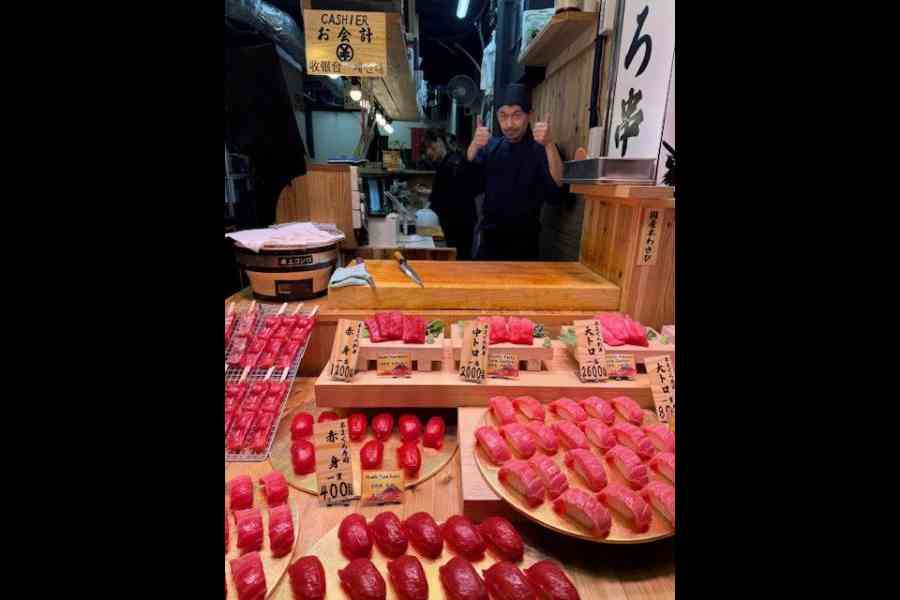
Various grades of tuna being sold at Dotonburi, Osaka. Picture: Shiladitya Chaudhary
Osaka is also famous for its vibrant food culture and a unique blend of historical and modern attractions. The city is known as ‘the nation’s kitchen’ due to its delicious cuisine, including street food like takoyaki and okonomiyaki. I have had the privilege of having Japanese ramen for the past so many years now, but the ramen stores at Dotonbori are to die for. The thin cuts of butaniku (Japanese pork) with the perfect slice of fat when you order a tonkotsu ramen will literally melt in your mouth.
Kobe
Even though I have been a regular visitor to Japan, I had never been to Kobe. I heard a lot about the world-famous Kobe beef, which is supposed to be the best and most expensive quality of beef in the world, the way the animals are reared to perfection and the process to raise them. Kobe beef is derived from a breed of Japanese cattle that are raised commercially in Hyogo. Kobe beef, with its high-quality marbled texture, needs to meet specific criteria for sale, including its origin and the manner in which the cattle are raised.
The city is equally famous for its scenic setting of mountains surrounding the harbour. This time, once in Osaka, I headed straight to Kobe city, which is about a 40-minute train journey from Shin Osaka train station. Once in Kobe, I headed towards Kobe’s Chinatown to savour a range of delicacies prepared with Kobe beef. The beef buns, grilled Kobe beef, and steaks are all delicious.
Motomachi Shopping Street
Motomachi — meaning ‘the original town of Kobe’ — is an old locality that was formed in 1874 and gradually became one of the shopping hubs in Kobe. The fairly short (a little over a kilometre in length) Motomachi Shopping Street offers 300 dining and shopping choices, including a mix of old and new shops. Some of the old shops here are well over a century old. The centre of the Chinese community, the Nankinmachi China Town, is right next to the arcade.
The Kobe Motomachi Shopping Street has several street food options, and you can enjoy the premium Kobe beef here on skewers and croquettes. Apart from food options, this lively shopping area is lined with stores that stock both traditional as well as contemporary goods. Choose from fashion and lifestyle, accessories, footwear, jewellery and more.
Hakone
Situated less than 100km from Tokyo, Hakone is part of the Fuji-Hakone-Izu National Park. It is famous for its hot springs, natural beauty, and the stunning view of Mount Fuji across Lake Ashinoko. Hakone has evolved into one of the most popular destinations among Japanese and international tourists, thanks to its proximity to Tokyo and its likeness to Swiss mountain retreats.
Hakone is brimming over with things to do, from visits to museums to castles and botanical gardens to temples. There is the spectacular Hakone Tozan Railway, a mountain railway line evocative of the ones that snake through the Swiss Alps. The Komagatake Ropeway takes tourists to the peak of Komagatake Mount Hakone. Point to note, most attractions shut down as the sun sets because Hakone is essentially a small place and there are specific operating hours. We took a tour that allowed us to cover Hakone and Mount Fuji nicely in a day as we chose not to stay overnight.
At the end of each vacation, I am left wishing for more. I may have well spent a staggering amount of time and funds exploring Japan, yet I will be planning my next visit even before I take the departure flight from the country. My bucket list is so long that I doubt if I will be able to tick off all the bullet points. An inexplicable addiction. That’s Japan for me.
Shiladitya Chaudhury is a communication consultant and a restaurateur with brands like Oudh 1590 and Chapter 2. His passion for wildlife photography, environmental conservation and exploring the world takes him to the remotest corners of the world

